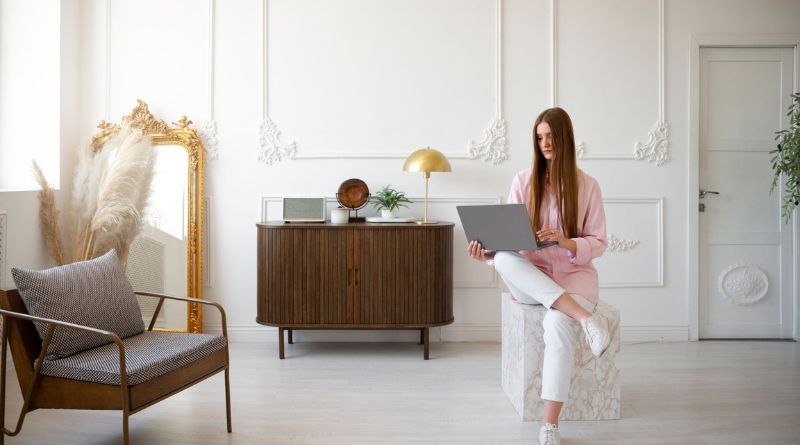Key Takeaways
- Discover the core principles of minimalist design and why it resonates today.
- Learn how minimalist approaches can increase comfort, functionality, and well-being.
- Understand practical strategies to incorporate minimalism at home or work.
- Explore current trends and expert insights into the future of minimalist living.
- Identify common misconceptions about minimalism and how to avoid them successfully.
What Is Minimalist Design?
Minimalist design, originating from Japanese “Zen” principles and Scandinavian simplicity, aims to create a space that promotes clarity and intention, transforming the way people live. It focuses on removing unnecessary elements and focusing on what is essential, fostering calmness, mindfulness, and efficiency in daily routines. Minimalist environments are a response to the rapid pace of modern life, where homes and workplaces are filled with clutter, distractions, and noise. The minimalist approach, exemplified by Studio Thomas, provides a versatile solution for individuals seeking spaces that foster focus, relaxation, and connection. Clean, open interiors allow the mind to settle while providing a backdrop for nature, creativity, and relationships to flourish. Many find their stress reduced and their sleep improved when surrounded by the quiet simplicity of a minimalist setting. This enduring appeal has made minimalist design one of the most influential movements of the 21st century, represented by creative leaders and studios worldwide.
The Core Elements of Minimalist Interiors
Minimalist interiors prioritize the careful selection of elements to create a sense of openness and balance. The color palette is typically neutral, which enlarges the space and creates a blank canvas for selected objects or natural features. Natural light is crucial, with large windows and skylights allowing sunlight to pour in from all angles. Minimalist furniture supports the room without dominating it, often being modular or stackable for multiple functions. Attention to detail is paramount, with subtle textures like matte ceramics, woven fabrics, or unfinished wood preventing the environment from becoming sterile. Each object is intentional, creating a sense of flow and harmony that makes even small spaces feel expansive and cohesive. The careful placement of these elements creates a coherent and inviting atmosphere.
Benefits of Incorporating Minimalism in Living Spaces
Minimalism has a significant impact on both mental and physical well-being by reducing stress and anxiety. It promotes a sense of calm and manageability, reducing cognitive overload and improving concentration. This approach also promotes sustainability and efficiency by reducing environmental impact and waste. Minimalist design prioritizes quality over quantity, making spaces easier to clean and maintain. This mindset is cost-effective and resists the culture of constant consumption. In essence, minimalism is about living with less, making room for what truly enriches your life, rather than living with nothing at all. Overall, minimalism is about making room for what truly enriches your life.
Current Trends in Minimalist Design
Minimalism is evolving towards eco-friendly and sustainable materials, such as bamboo and cork flooring, recycled glass countertops, and wool or linen textiles. Green building certifications and natural finishes are gaining popularity as a means to promote healthier living. Biophilic elements, such as indoor gardens and houseplants, are gaining popularity for their aesthetic appeal and air-purifying benefits. Smart technology and clever storage solutions are also gaining popularity, featuring built-in shelves, wall beds, and concealed cabinetry, which create a clean and uncluttered look. Flexible spaces are gaining popularity for remote work and hybrid lifestyles, and automated lighting, sound, and temperature systems are transforming minimal interiors into personalized sanctuaries.
Practical Steps to Create a Minimalist Home
Decluttering: Where to Begin?
- Pick one small, manageable zone—a drawer or a closet—to start. Deep cleaning an entire room all at once can be overwhelming and drain motivation.
- Assess items by categories: What gets used regularly? What brings joy, function, or beauty? Is anything broken or redundant?
- Part with unused or unnecessary belongings by donating, recycling, or disposing of them responsibly. Set aside only what genuinely adds value.
With the clutter gone, it’s time to curate what stays thoughtfully. Opt for furniture and accessories that do double duty, like a table with hidden extensions or a couch that becomes a guest bed. Prioritize timeless designs over seasonal trends, focusing on pieces that will remain meaningful and durable for years to come. When decorating, less is more. Instead of filling shelves and walls, allow space between each piece. Display art and cherished objects where they stand out, giving your home “space to breathe.” Minimalist doesn’t mean empty; it means every item matters.
Expert Tips: Successful Minimalist Transformations
Minimalist transformations require an understanding of the occupants’ lifestyle. Designers suggest using built-in benches in entryways, open shelving for busy families, and stain-resistant fabrics in compact apartments. Maximizing natural light, utilizing mirrors, incorporating plants or handmade art, and selecting special objects can enhance both comfort and style. Incorporating vertical space and multifunctional furniture can improve comfort without sacrificing style. Experts also recommend maximizing natural light, adding plants or handmade art for warmth, and selecting a few special objects to tell a story.
The Future of Minimalist Living Spaces
Minimalist design is expected to have a significant impact on societal spaces, driven by cultural and economic shifts, the rise of remote work, and the increasing prevalence of urban living. People seek adaptable, welcoming, and efficient environments. Minimalism offers a flexible model that can adapt to city apartments and country homes, allowing for rapid changes. Though trends may change and new materials emerge, the core of minimalist living remains timeless. As technology advances and lifestyles evolve, minimalist philosophy will continue to lead towards healthier, more harmonious living spaces that nurture people and the planet.
